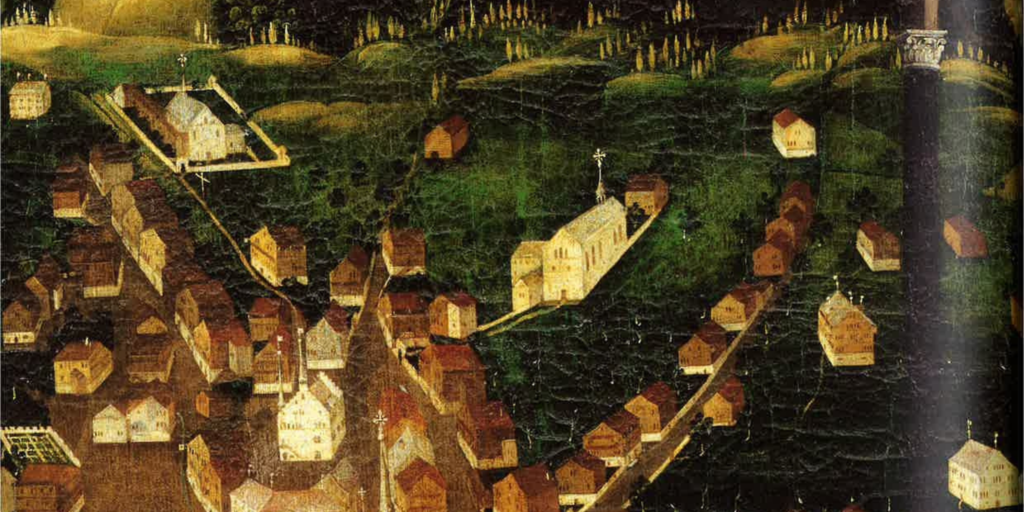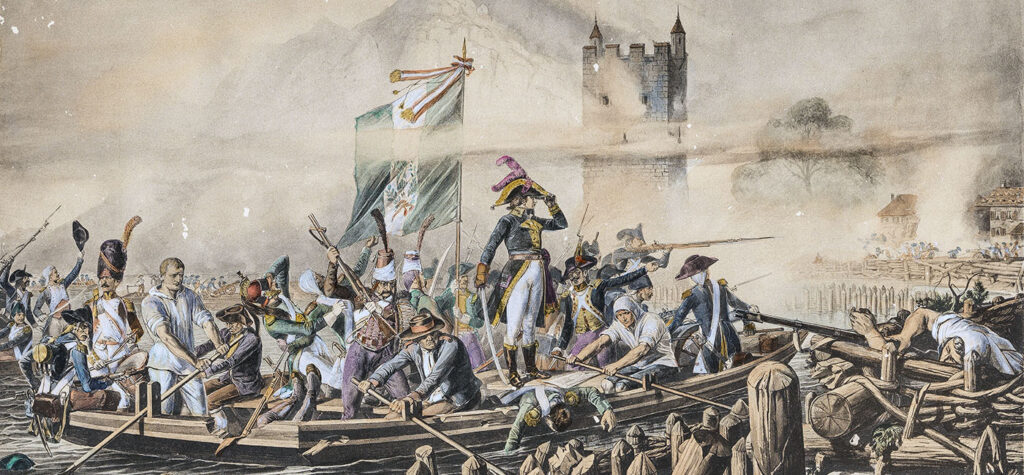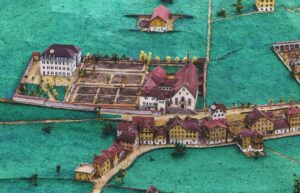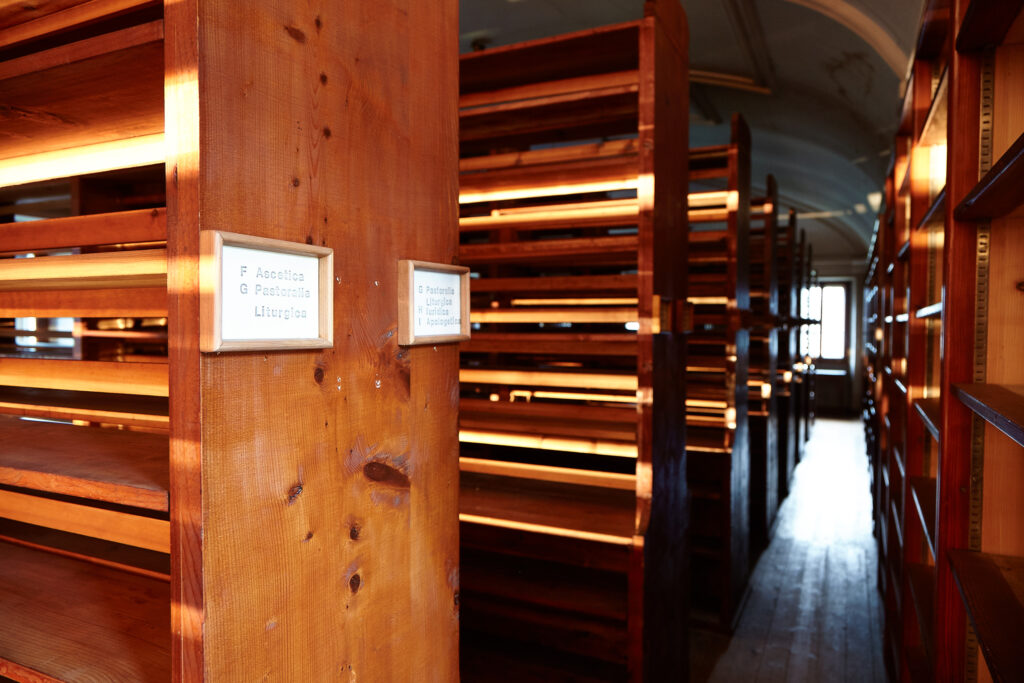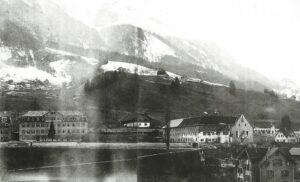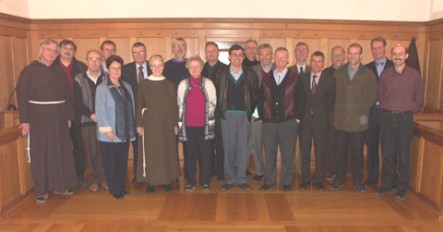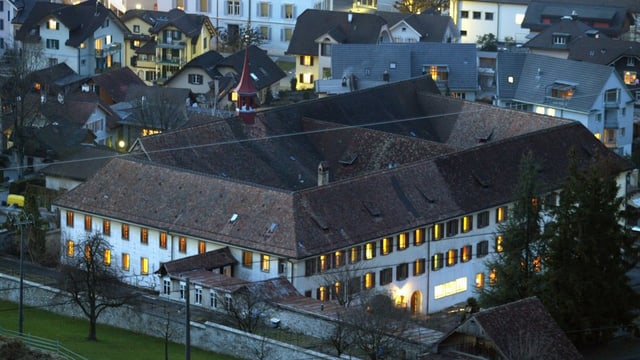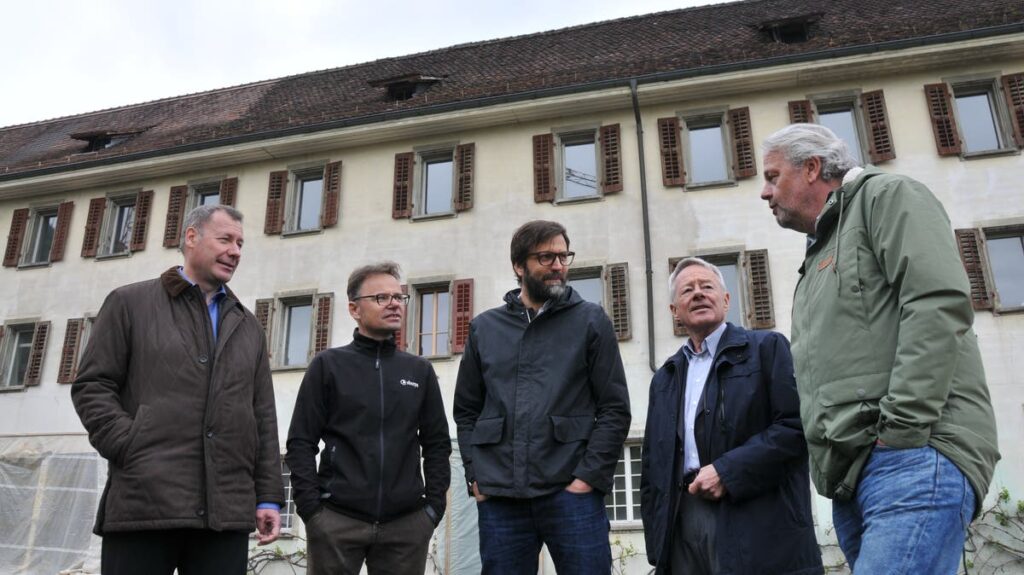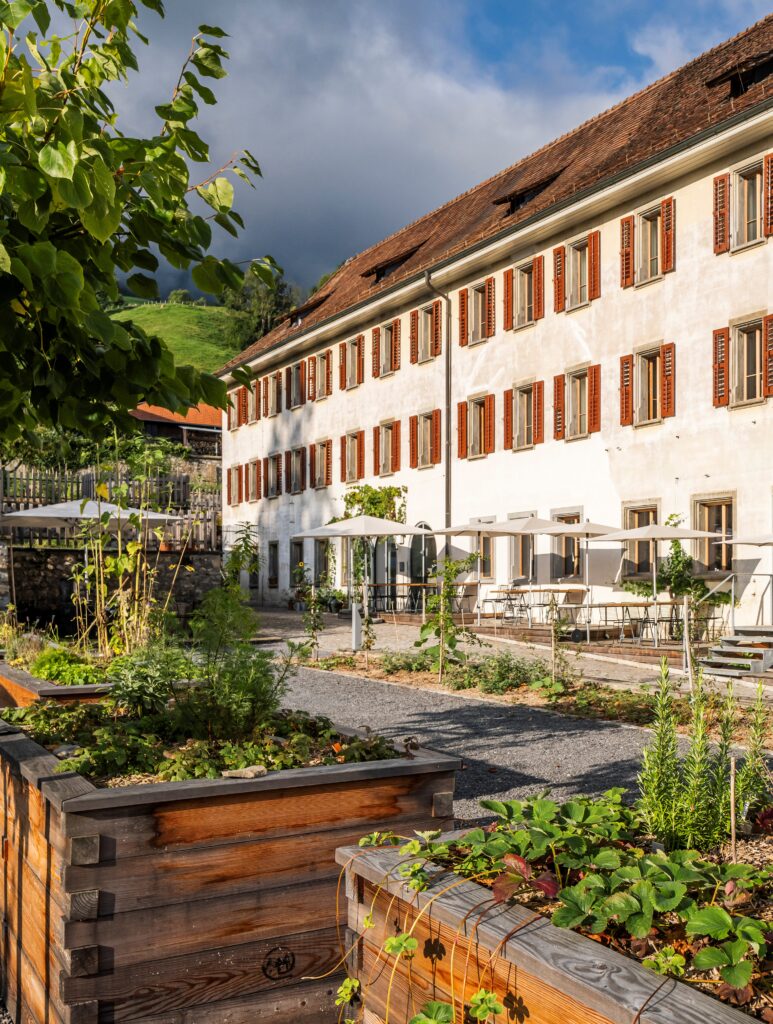STANS
Stans is located at the end of the Engelberg Valley, at the northern foot of the Stanserhorn and stretches as far as the Bürgenberg and Ennerberg. People have lived in what is now the old village center, virtually in the shadow of the Stanserhorn, since the 2nd century BC. The first church was built around 750 in the early Middle Ages. Today’s parish church, which dominates the village skyline, dates back to 1647. It, as well as the two convents of the Capuchin Friars Minor and the Capuchin Sisters Regular Tertiaries, survived the devastating village fire of 1713. The village square, which was then generously designed with stately baroque houses and the town hall, is one of the most beautiful in Central Switzerland. Stans is the political, ecclesiastical, economic and cultural center of Nidwalden.
THE CAPUCHINS
Let’s take a trip back in time to the 15th century: Gutenberg invented the printing press in 1440, 52 years later (1492) Columbus discovered America, another 25 years later Luther published his theses in Wittenberg in 1517, heralding the Reformation, and in 1531 the reformer Zwingli died in the second religious war between the Catholics and the Reformed. The Old Swiss Confederacy was religiously and politically divided into Catholic and Reformed.
Johann Melchior Lussy (1529-1606) from Stans, the richest man from Nidwalden and envoy to the Council of Trent on behalf of the Catholic Estates, bailiff in Bellinzona, Knight of the Holy Sepulchre and eleven times Landammann of Nidwalden, lived in this period, which was strongly influenced by the past. He owed his wealth to the mercenary trade. The Capuchin monastery on the Mürg in Stans, built in 1583, is due to Lussy’s initiative, appointment and foundation in 1582 together with the reformer Cardinal Charles Borromeo from Milan. Initially, the people, stirred up by the parish clergy, resisted the Franciscan reformers. Their foreign language, the poor habit with the long pointed hood and the rope as a belt, the bare feet in sandals and the long beards took some getting used to. All this was probably the reason why the Landsgemeinde only approved the construction of the monastery at the second attempt.
FROM THE CAPUCHIN MONASTERY TO THE CULINARIUM ALPINUM
1583/1584 Start of monastery construction, plague, completion of construction
On May 11, 1583, the foundation stone of the east-facing monastery church is laid on the Mürgg, the property of Johann Melchior Lussy, and construction of the monastery begins. The plague breaks out in Nidwalden and the Capuchins, who are currently residing in various places in Nidwalden, take care of the plague patients, which makes them very popular with the population. In March 1584, the Capuchins move into the completed monastery building. The church is consecrated in 1585 and becomes the patron saint of the Assumption of Mary.
1683/1684
The monastery and church had to be rebuilt due to the cheap building fabric of the previous complex and the increase in the number of friars. On this occasion, the monastery and church were reoriented towards the south (instead of the usual east). The new building was led and financed by Johann Ludwig Lussy (grandson of Johann Melchior Lussy), also with the help of the monks of Engelberg. The church retains its patron saint, the Assumption of Mary.
1778
The Capuchins are commissioned by the Nidwalden government to run a grammar school in their monastery because of the poorly run parish Latin schools and the abolition of the Jesuit order in 1773 by Pope Clement XIV in Rome, which led to the loss of the Jesuit college in Lucerne. The monastery flourished in pastoral care, education and culture and was held in high esteem.
1798
During the French invasion (occupation 1798-1803), around five percent of the population of Nidwalden lose their lives. Three Capuchins are murdered. The cells and interior of the monastery are destroyed and the monastery building is used as barracks until 1803. The church survived this period almost unscathed as a stable for horses. The Capuchins find accommodation in the chaplain’s house of St. Clare’s monastery. The Battle of Allweg against the French (September 9) is still commemorated by the state today.
1803 / 1804
The district council decides to restore the monastery. The grammar school and church are moved into and reopened as early as 1804.
1877
The Capuchins decide to found their own grammar school independently of the state. This marks the beginning of the boom years for the monastery and the Capuchin Order in Switzerland. Stans becomes one of the most important Catholic centers of excellence for education in Switzerland.
1883
The Swiss Capuchin Province builds a secondary school building with a boarding school next to the monastery. A Sequoia (sequoia tree) is planted, which can still be admired today.
1895/96
The convent becomes a college under the patronage of Fidelis von Sigmaringen.
1907
In 1907, an open Fidelis Chapel is built on the side of the Capuchin Church to the west of the outer choir.
1907/1924
The constantly growing number of pupils means that the college is constantly being converted and extended. The monastery needed space for more teachers and professors. The monastery is extended to the south and at the same time an upper floor is added, followed by a hall in the south wing for the library, which has grown enormously.
1946
Total renovation of the monastery church under the Capuchin Leutfried Signer and the architect Hans Steiner.
1956 / 1957 / 1977-1978
1956 Expansion and redesign of the Capuchin cemetery on the west front of the church, including a monument to Knight Johann Melchior Lussy. The college is extended in 1957 with a new lyceum and gymnasium, then completely rebuilt in 1977-1978 while retaining the façade and adding another gymnasium.
1988
After 111 years of management by the Capuchins, the canton takes over the grammar school. The Capuchins close the boarding school. Since then, the Kollegium St. Fidelis has been a cantonal secondary school under the same name.
1989/1990
Partial renovation and conversion of the monastery and complete restoration of the church. The monastery and church are placed under a preservation order.
2004
Following a decision by the Swiss Capuchin Province, the convent of the monastery is dissolved, the Capuchins leave Stans and the monastery complex (6500 square meters of land) is sold to the Canton of Nidwalden for the symbolic price of 1 million francs.
2004 The VEREIN KAPUZINERKIRCHE STANS (VKS) is founded on the initiative of Government Councillor Beat Tschümperlin with the approval and support of the Capuchin Province with the purpose of continuing the “cult and culture of poverty of Francis of Assisi in the tradition of the Capuchins”. The VKS is given the nave, holy tomb, outer choir and sacristy as sacred premises and the inner choir on a contractual basis with the Nidwalden government and the Capuchin cemetery. Every year, the church is the spiritual center during the “Nidwalden Week of Religions”.
2008
After a few years of vacancy, a pharmaceutical company takes over the monastery on building rights for 60 years. However, their research concept fails and the company leaves the monastery in 2013. It is now empty again. Thanks to the VKS, the church is the only thing that is still alive. In addition, the canton of Nidwalden, as the landowner of the building, is looking for a new investor who would like to take over the listed monastery under building rights and convert it.
2015
The Nidwalden government has awarded the contract for the new use of the monastery building and gardens to the Swiss Senn Group, which, in collaboration with Wüest&Partner and the author and journalist Dominik Flammer, has presented a convincing concept for a competence center for culinary art in the Alpine region.
2017
The KEDA Foundation (Culinary Heritage of the Alps) is established and operates the CULINARIUM ALPINUM. The KEDA Foundation promotes projects in Switzerland and the rest of the Alpine region that serve to preserve, develop and market the regional organic and product diversity of small-scale agriculture, mountain and Alpine farming and the locally based food processing industry. It promotes training and further education in all aspects of Alpine cuisine and local agriculture with the aim of disseminating knowledge and thus strengthening the profile of regional production. It is based on the guidelines of the Swiss Bio Bud, the existing diversity of varieties and animal breeds in agriculture as well as the existing traditional resources and the diversity of regional cuisine in the Alpine region. (Image, from left: Othmar Filliger, member of the cantonal government; Daniel Niederberger, architect; Dr. Johannes Eisenhut, Senn Group; Tis Prager, President of the Foundation Board; Dominik Flammer, journalist & author)
2020
After several years of renovation and conceptualization, the CULINARIUM ALPINUM with hostel and restaurant opens its doors in August. The VEREIN KAPUZINERKIRCHE STANS (VKS) continues to operate in the sacred rooms of the church and cooperates with the CULIRNARIUM ALPINUM. In the gastronomy of the CULINARIUM ALPINUM, the focus is on regional credibility. It works primarily with authentic and unadulterated regional products from Central Switzerland, preferably with products from organic farming, supplemented with products from the culinary Alpine region. The restaurant has around 70 indoor and 50 outdoor seats. The team around host Peter Durrer is also responsible for serving guests in the monastery hall and the garden room belonging to it.
2022
The Edible Landscape, part of the CULINARIUM ALPINUM, is opened. In collaboration with the Swiss Foundation for the Cultural-Historical and Genetic Diversity of Plants and Animals ProSpecieRara, this unique world of experience was created with around 250 different varieties of fruit and berries as well as an extraordinary herb garden.

